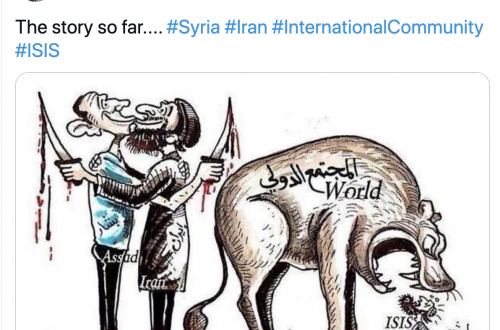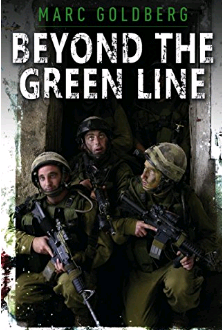This is a (somewhat belated) cross post by Dave Rich of The CST Blog
This weekend saw a shocking antisemitic assault in Villeurbanne, near Lyon, when three young Jewish men wearing kippot (skullcaps) were attacked by a group of ten attackers, who beat them with hammers and iron bars while shouting “Dirty Jews”. All three victims requried hospital treatment, but thankfully none sustained serious injuries.
According to the Service de Protection de la Communauté Juive (SPCJ), CST’s counterparts in France, this assault was part of a dramatic increase in antisemitic incidents in France since the terrorist murder of four Jews, including three children, by Mohammed Merah at a Jewish school in Toulouse on 19th March. SPCJ recorded 148 antisemitic incidents in France between 19th March and the end of April, more than double the 68 incidents recorded during the same period in 2011 (full figureshere in French, or here in English). Over 90 of these incidents took place in just ten days following the attack in Toulouse. 18 of the 148 incidents were violent (not including the Toulouse murders).
You can read about some of the other antisemitic incidents that have happened in Villeurbanne here.
CST has explained in our previous antisemitic incident reports how trigger events involving Israel or Jewish-related issues, such as the conflict in Gaza in 2009, can lead to a rise in antisemitic incidents. Now we are witnessing how a terrorist attackon Jews, as happened in Toulouse, can also lead to such a large rise in antisemitism. It is worrying to think that a significant number of people may have been inspired by Mohammed Merah, rather than repulsed by him as most people were.
Antisemitism does not define Jewish life in Britain or France, although there are smaller Jewish communities in Europe where it threatens to do so. However it is a serious problem for many Jews, and as Toulouse showed, antisemitic terrorism is real and deadly. This threat needs to be analysed and understood so that it can be addressed, and it is here that a worrying gap exists: one that is at best defined as double standards and at worst as a knowing nod to antisemitic violence.
The double standard is blatant. Anders Breivik’s terrorist murder of Norwegian children has led to a widespread and profound analysis of the Islamophobic ideas and actors from which he drew inspiration. Much of this research has painted a picture of Breivik commiting his appalling crimes while stood atop a vast mountain of anti-Muslim discourse. People will naturally disagree about how widely this net should be cast and who rightly belongs in such an analysis, but the process is surely a necessary one. Yet there has been no comparable investigation, in the UK at least, of the antisemitic discourse and actors whose words and actions inspired Mohammed Merah, and seemingly little appetite to create one. This is particularly apparent on the political Left, where efforts to raise awareness of Breivik’s Islamophobia have been most extensive.
Jihadist Jew-hatred may not be the only form of antisemitism operating in Europe today, but Merah, sadly, represents the extreme realisation of contemporary antisemitism for many Jews. Similarly, anyone who follows this subject closely will not have been surprised to discover that the assailants in Villeurbanne were of north African origin. This does not mean that most antisemitic incidents are carried out by Muslims, or that most Muslims are antisemitic. Muslims in France and Britainexpressed solidarity with their fellow Jewish citizens in the wake of the Toulouse shootings. Nor does it legitimise using the problem of antisemitism as an anti-Muslim or anti-immigrant tool, as many on the European populist Right are quick to do. Jewish community leaders in Britain and across Europe have rejected the advances of fake friends on the European far right, and will continue to do so.
Beyond the solidarity, though, there is far too widespread a reluctance amongst some to openly address the problem of antisemitism that does exist within some European Muslim communities, and beyond that to recognise the endemic antisemitism that exists in the mainstream discourse and public opinion of some majority-Muslim societies. It is too easy to explain away open expressions of Jew-hatred as an unfortunate, but essentially superficial, consequence of the Israeli-Palestinian conflict, if the terrorists or iron bar wielders or hate speakers are Muslims. Then there is no need to analyse the Jew-hatred politically or ideologically, because it is not ‘real’ antisemitism; you can rely on the assumption that if you remove the cause (by Israel changing its behaviour in some undefined way) then the effect will similarly disappear. By this way of thinking those people who do express hatred of Jews in that context only need to be taught how to express themselves in a more acceptable way, rather than having their views challenged at a more fundamental level.
The reluctance to address the problem of prejudice within a community that is itself targeted by racists is understandable. Islamophobic hatred is a daily reality for many Muslims in Britain and Europe. Racism is best confronted by campaigns that reach across communities, creating solidarity in place of division. CST has for many years helped other communities tackle prejudice and we are currently helping British Muslims deal with the problem of anti-Muslim hate crime. This kind of coalition-building, though, cannot be an excuse to prioritise one prejudice over another, or brush any of them under the carpet. An anti-racism that fails to address the reality and perception of antisemitism as it is actually experienced by Jews is no kind of anti-racism at all.
If you can’t acknowledge the antisemitism represented by Mohammed Merah, you have nothing truly relevant to say to European Jews about contemporary antisemitism as they understand it.


